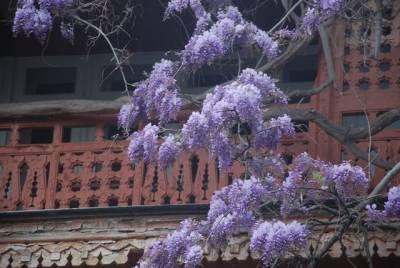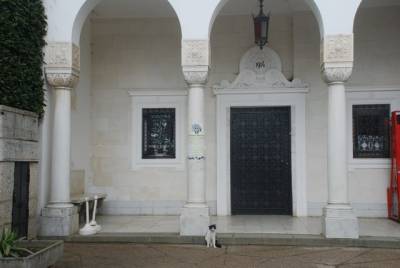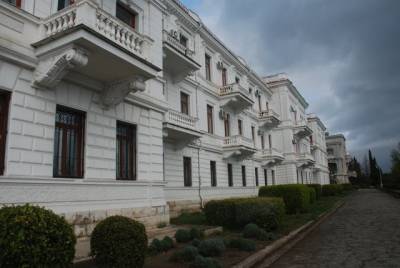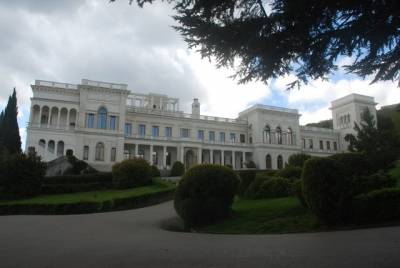A Greek word "Livadia" means «a
meadow», «a
lawn», «a glade». Faced to the sea, this land in the middle of the
natural
forest has always been one the most beautiful points of the Southern
Coast. At
the beginning of the 19th century Livadia lands were owned by the
Balaklava
Greek battalion commander colonel F. Reveliotti.
In 1834 he sold Livadia to the
Polish count Leo Pototsky. For nearly 30
years
Livadia belonged to his family. By the 60th years of the 19th century
Livadia
was a typical southern estate.
The architect Karl Eshliman built a
big manor-house,
household buildings, living quarters for the servants. The gardener
Delager
laid out a park where local trees were successfully
combined with the plants from Southern Europe, Asia and
The architect Ippolit
Monigetti reconstructed the
estate for the demands of Alexander II family and added 70 big and small
buildings. The works have been carried out from 1862 to 1866.
The Emperor, his wife and children used to spend every
autumn in Livadia. For the last time Alexander II visited his favorite estate
in December 1880, just few months before his death.
From 1881 till 1894, during the rule of Alexander 3,
Livadia was the summer residence of this Russian tsar. In 1891 the estate
territory was enlarged due
to buying neighboring Oreanda lands.
After the death of Alexander III in 1894 the estate
was inherited by the
last Russian tsar Nicolas
1834 - the estate was founded by Leo
Pototsky
1861 - the estate was bought by
Russian Emperor
Alexander II
1894 - Russian Emperor Alexander 3
died in Livadia
1910-1911 - a new palace was built
for the family of
the last Russian tsar Nicholas II
1920 - the
palace was nationalized
1925 - a sanatorium was opened in the palace
February 4 -
11, 1945 -
1953 - a sanatorium was opened in reconstructed palace
1974 - the
1991 - the Museum of the Romanovs in
the

















